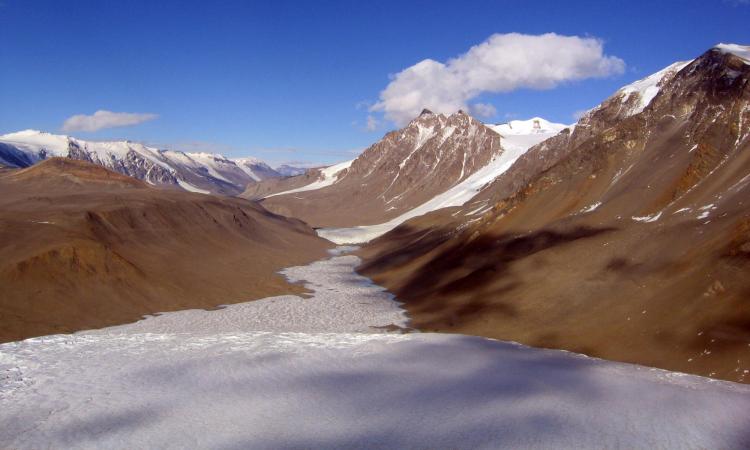Airborne soot's effect on Antarctica's glaciers

The McMurdo Dry Valleys with a view of Lake Hoare and the Canada Glacier. Credit: Dave Haney, NSF
Airborne soot produced by wildfires and fossil-fuel combustion and transported to the remote McMurdo Dry Valleys of Antarctica contains levels of black carbon too low to contribute significantly to the melting of local glaciers, according to a new study by researchers supported by the National Science Foundation (NSF).
Strong winds in the Dry Valleys, however, can temporarily cause large spikes in the amount of locally produced black carbon, which is distributed through the ecosystem, the researchers found.
In the study, the researchers differentiated between black carbon produced elsewhere in the world and carried by winds to the Dry Valleys and black carbon produced by local combustion sources, such as helicopter flights, combustion toilets and other fossil fuel-intensive activities associated with Dry Valleys field camps.
They conclude that further study of local carbon production and transport would help to understand the limited effects of local black carbon production on the Dry Valleys ecosystem, compared to the effects of windblown sediments, commonly deposited in the ablation regions of the glaciers, that have been shown to influence melt.
Alia Khan from the the University of Colorado Boulder's Institute of Arctic and Alpine Research and the National Snow and Ice Data Center, along with her colleagues at the NSF-funded McMurdo Dry Valleys Long Term Ecological Research (LTER) project, published the paper in the Journal of Geophysical Research: Atmospheres.


